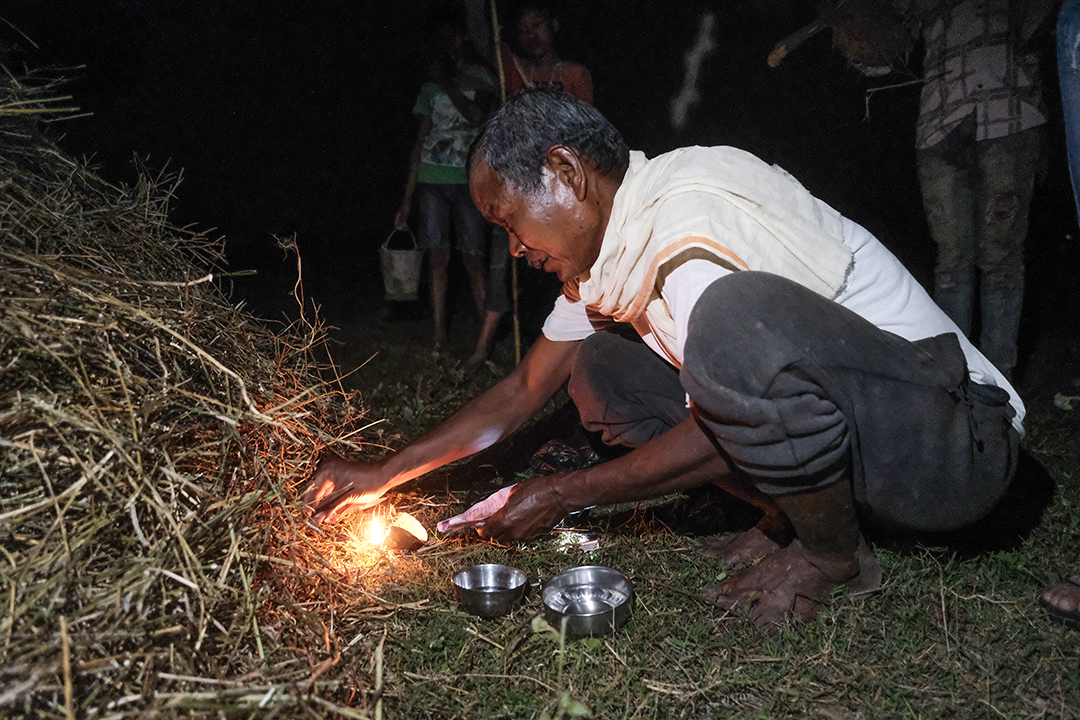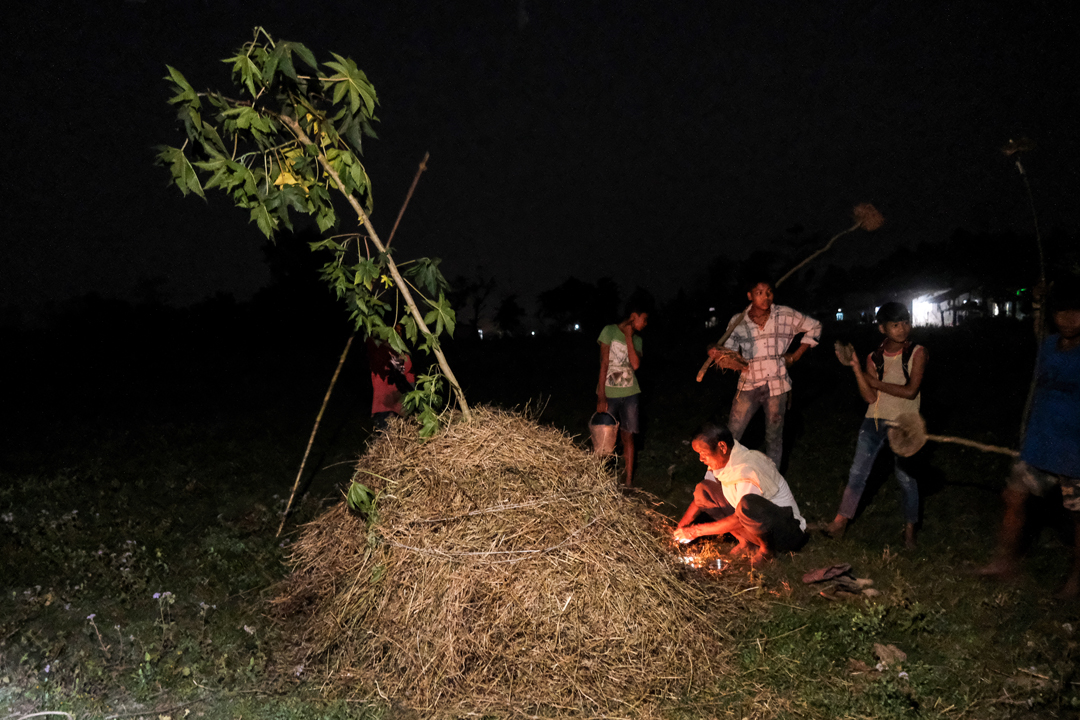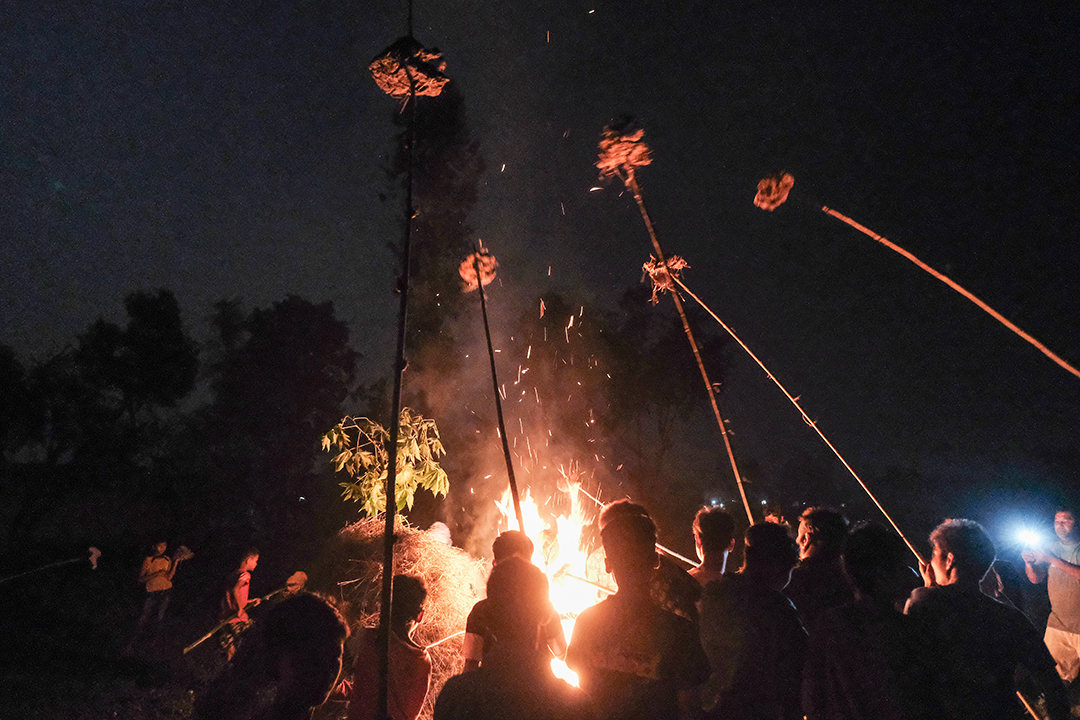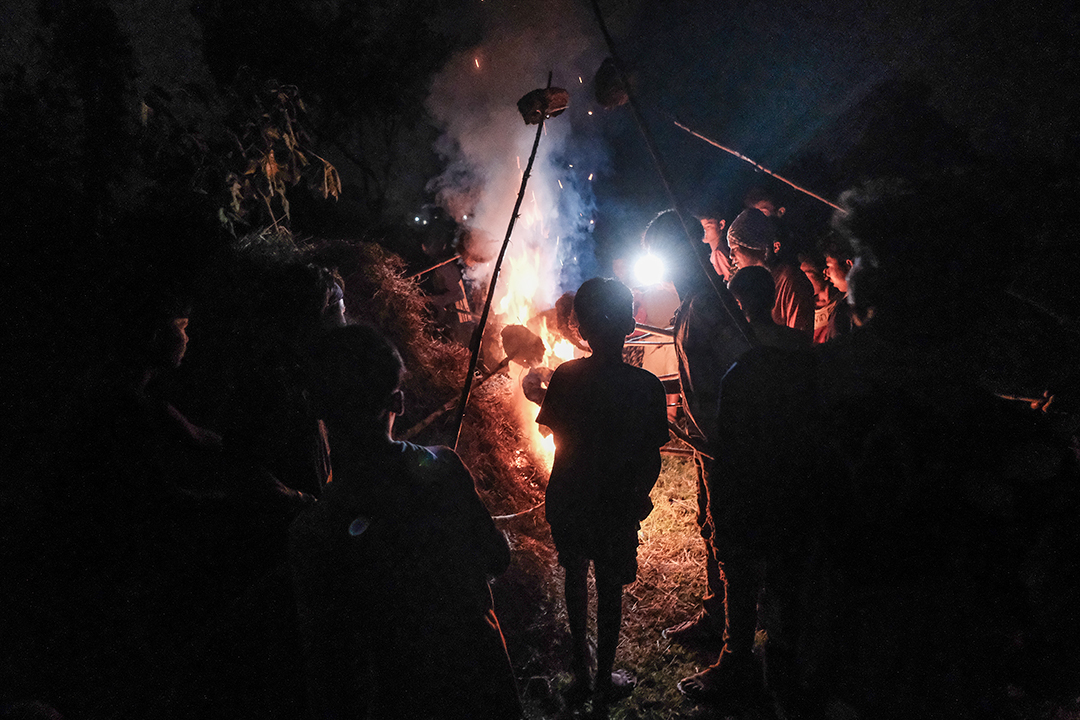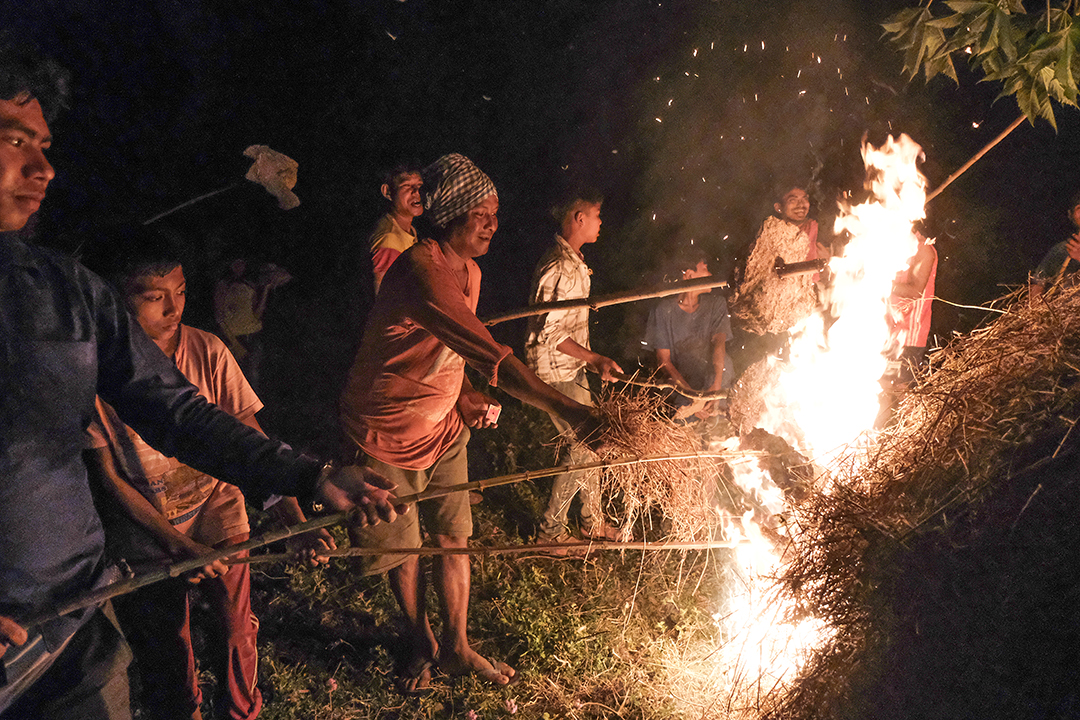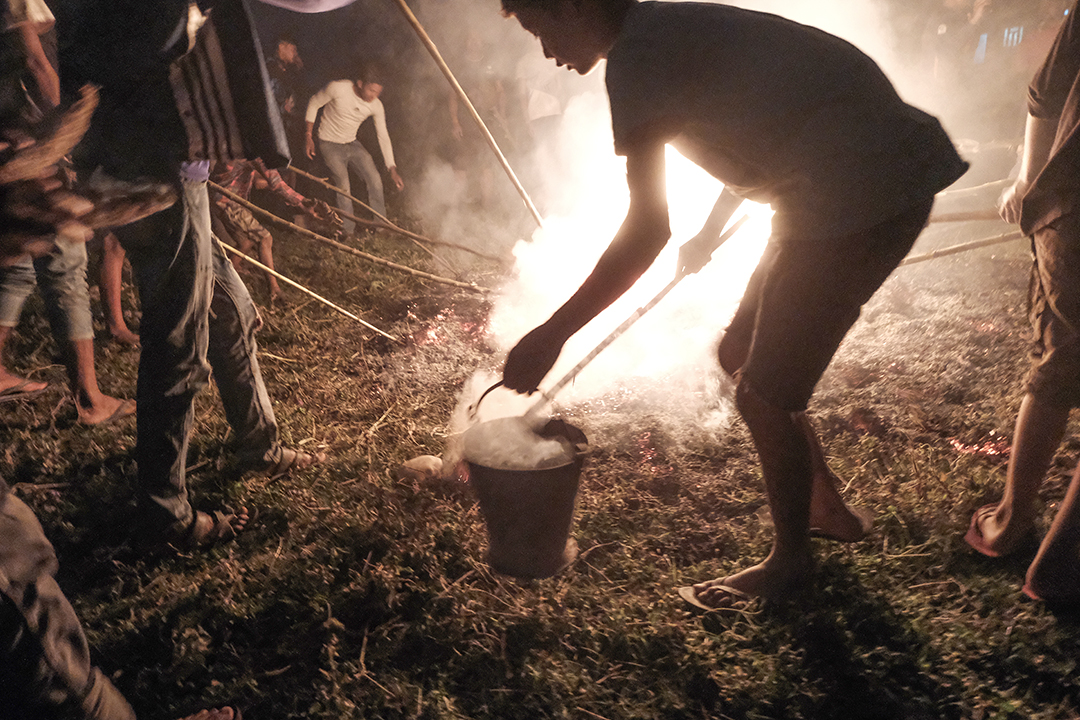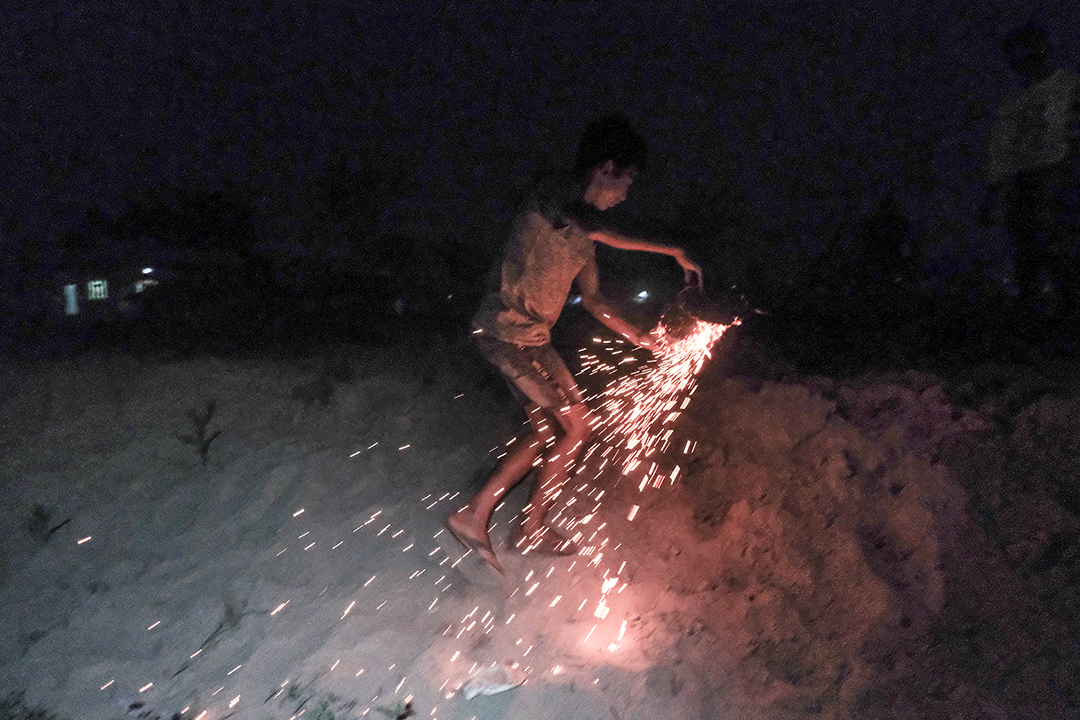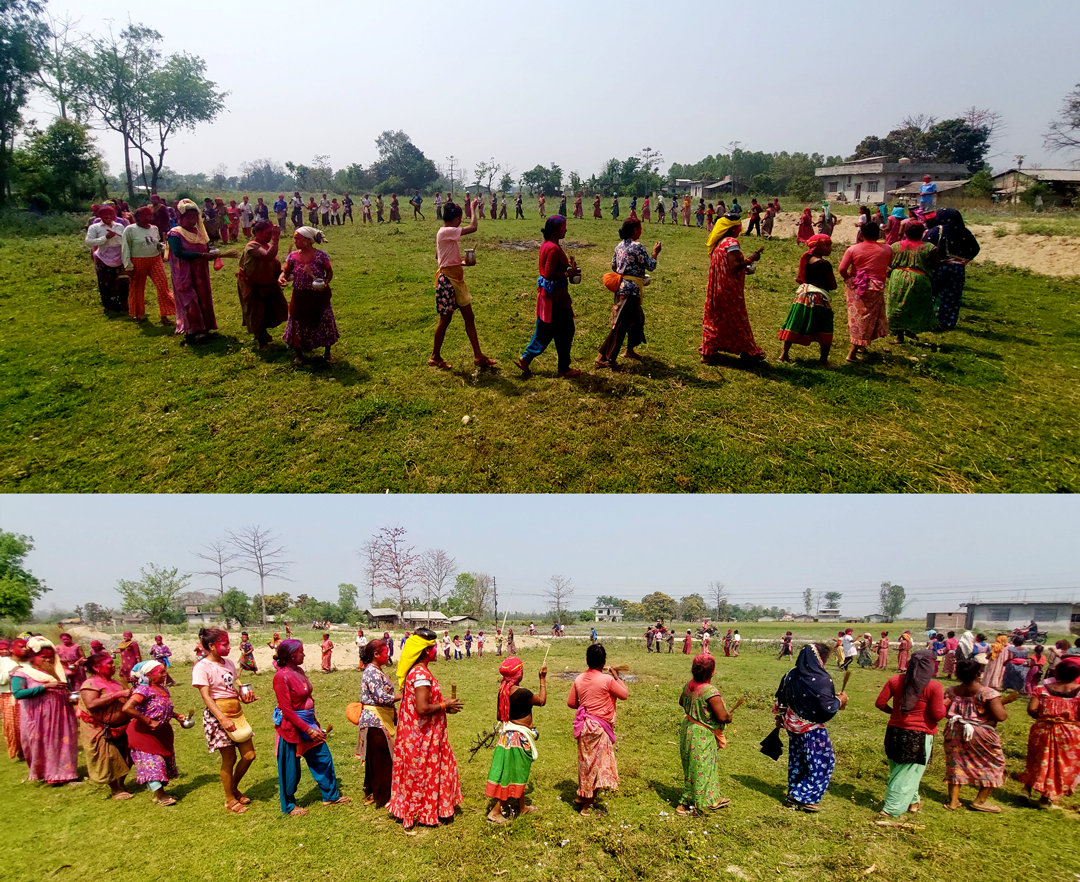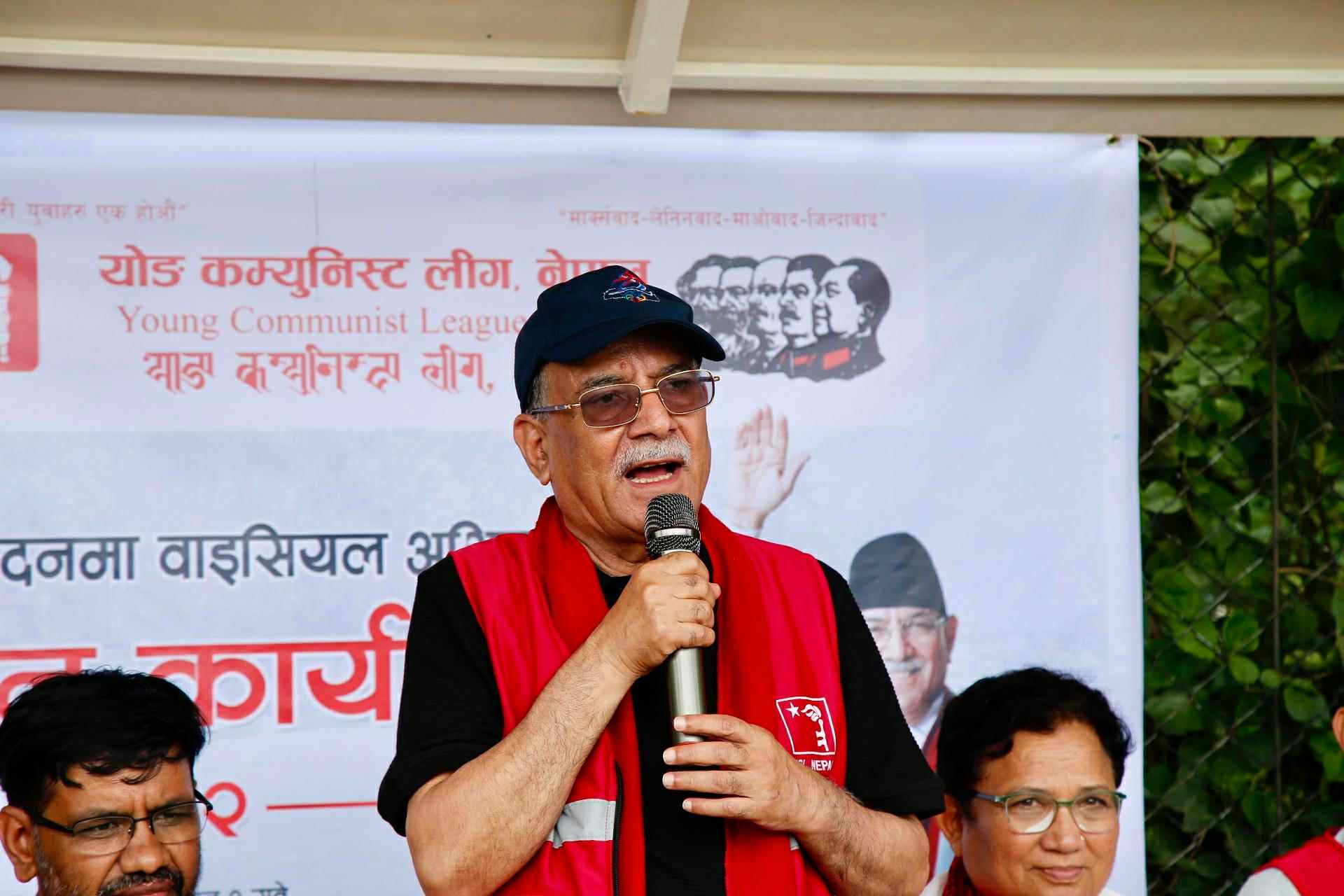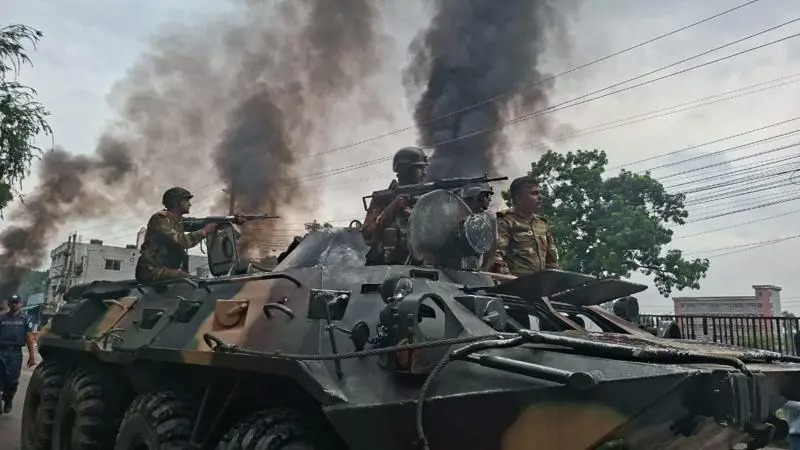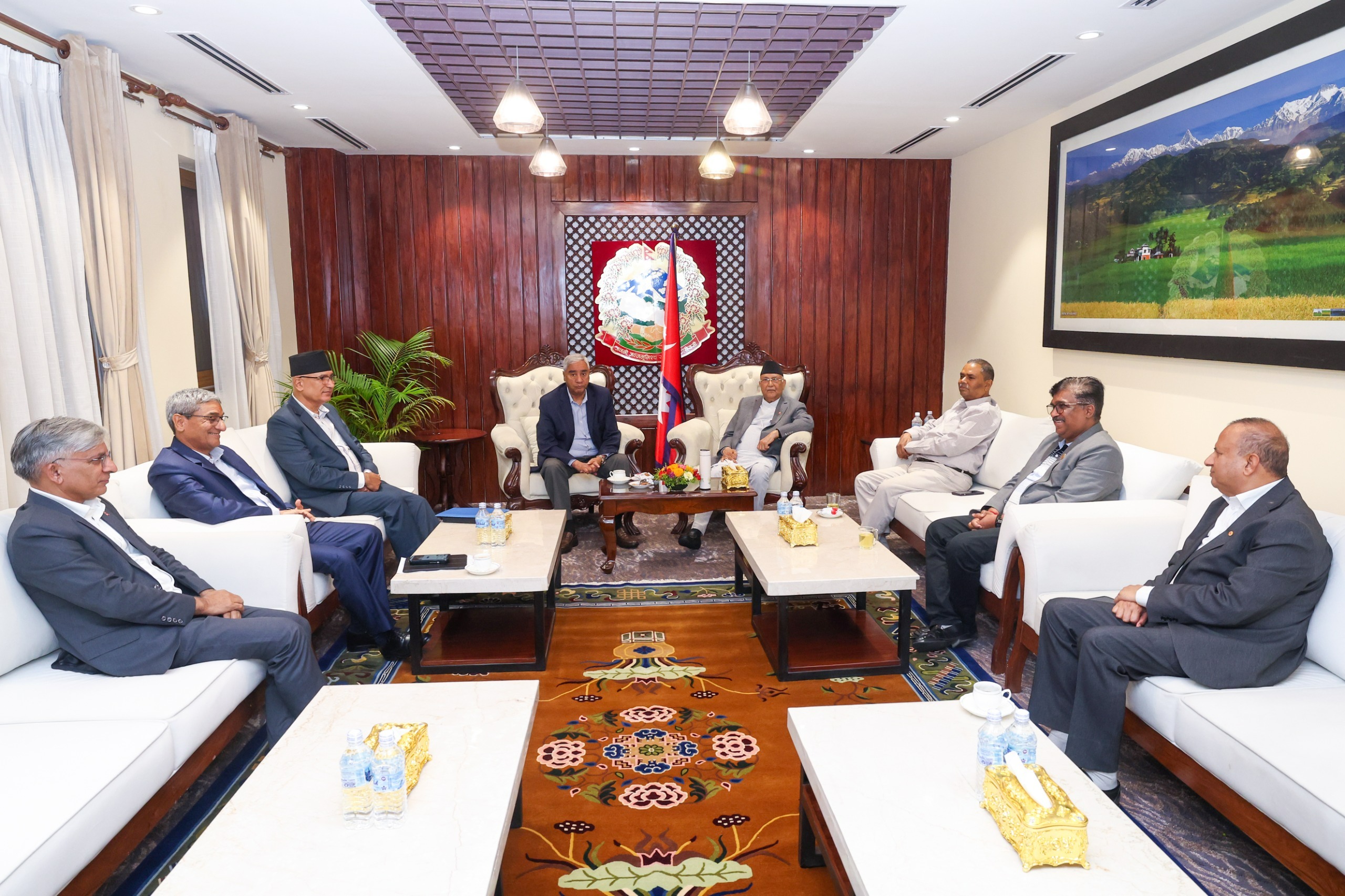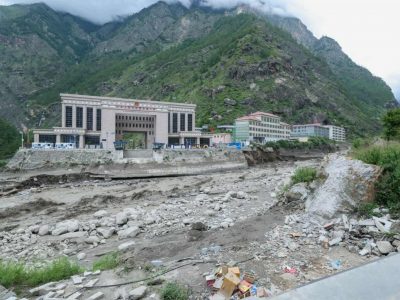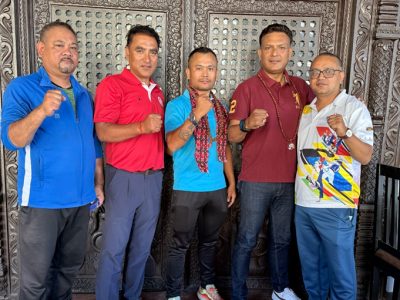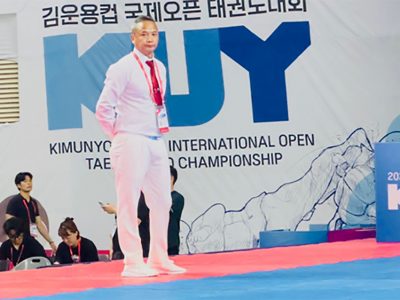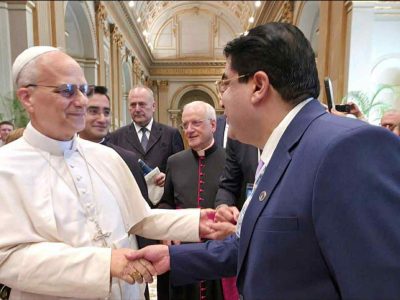Tharu communities in Rajapur celebrate Holika Parva; Families welcome new fire into the hearth (Photo Feature)
Our ancestors used to kindle the fire by rubbing the wood. They had no other options. Now, we have access to lighters and matchsticks. We don't need to worry about rubbing the wood pieces.

Kathmandu, March 7. On the evening of Fagu Purnima, Dangaura Tharu communities in Rajapur of Bardiya district celebrate the Holika Burning festival. The Tharu communities ignite a fresh fire during the festival, and each of the households welcomes the new fire into their kitchen hearth.
In the past, making a fire was a difficult task. Because there were no matchsticks available, one would have to rub pieces of wood to kindle a fire. Since the fire was an everyday necessity in the cooking hearth, It was very important to keep the same fire going for a very long time.
Tharus, like many other communities in Nepal, used to kindle a new fire once a year and maintain the fire throughout the year. The annual fire was replaced once a year with a new fire.
Holika Burning Festival
Every year, on the evening of the full moon day of the Nepali month of Falgun (or, Fagu Purnima), the male members of Rajapur’s Daulatpur Tharu village gather in a nearby field. They put up a big hay pile on the ground and wait for the sunset. After the sky completely darkens, the Guruwa (or Tharu priest) performs a worshiping ritual.
Considering the pile of hay as the Hindu demon Holika, the Guruwa performs a puja and pours a few drops of Chhakki Bunda. Chhakki bunda is a mixture of homemade pure alcohol and water. Tharus believes that pouring drops of homemade alcohol in the name of ancestors will purify the worship. The Guruwa then kindles a fire and ignites the hay pile.
Use of Gas Lighters replacing the traditional technique
Unlike in the past, the Guruwa now sparks the fire with a gas lighter purchased from the grocery store. A local Guruwa from Rajapur talked with DC Nepal, “In the past, our ancestors used to kindle the fire by rubbing the wood. They had no other options. Now, we have access to lighters and matchsticks. We don’t need to worry about rubbing the wood pieces.”
He further continued, “Every family in the past used to put forth efforts to maintain the same fire throughout the entire year. The traditional technique of kindling a fire, therefore, had great value… the stoves in modern homes are regularly lit and unlit, multiple times every day. We have to move along with time. We do not use random lighters because we respect the cultures of our forefathers. We instead purchase brand-new lighters that are thought to be untainted and pure.”
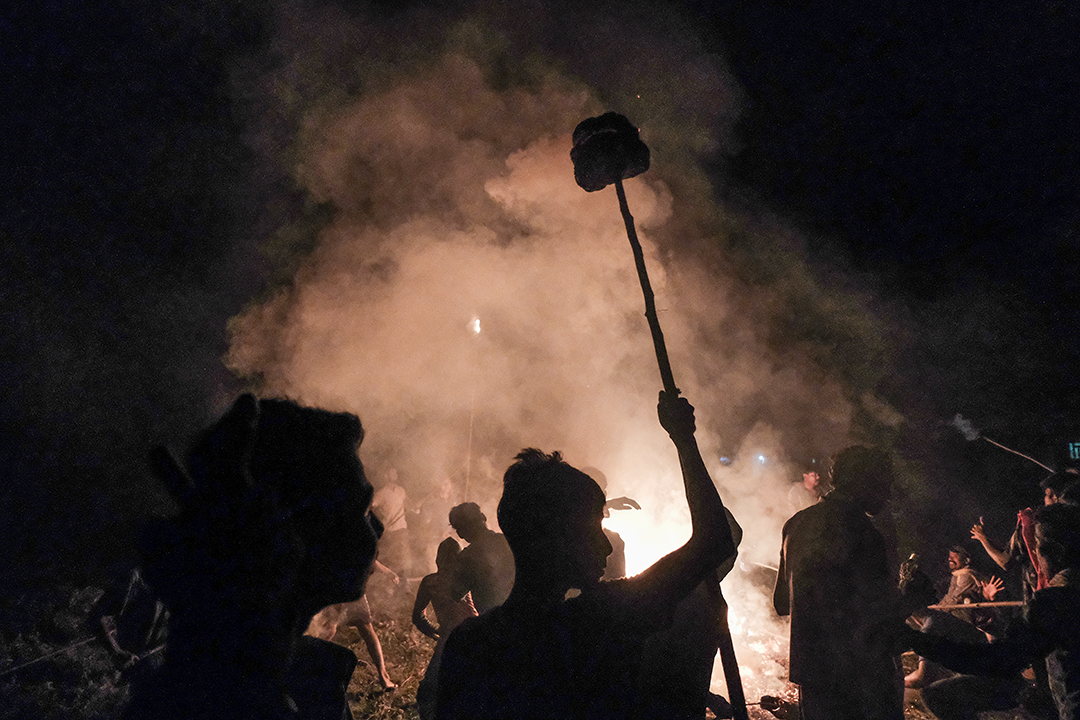
Young Boys carry new fire to the kitchen hearth
As the Guruwa set fire to the hay pile, young boys from every house arrive in the field carrying cow dung cakes. Some boys carry the dung cakes in metal buckets, while others hold them with a long wooden stick. The boys light the dung cakes on the burning hay pile. They then carry the new fire to their homes.


Except for the children, female members are not supposed to be allowed inside the Holika burning field. The housewives remain in the kitchen, awaiting the arrival of the new fire. When the boys arrive with the burning dung cakes, the new fire is transferred to the kitchen hearth. Oil lamps are lit and placed in the sacred corners of the houses. The new fire in the kitchen hearth is supposed to be kept alive until the next Holika festival.
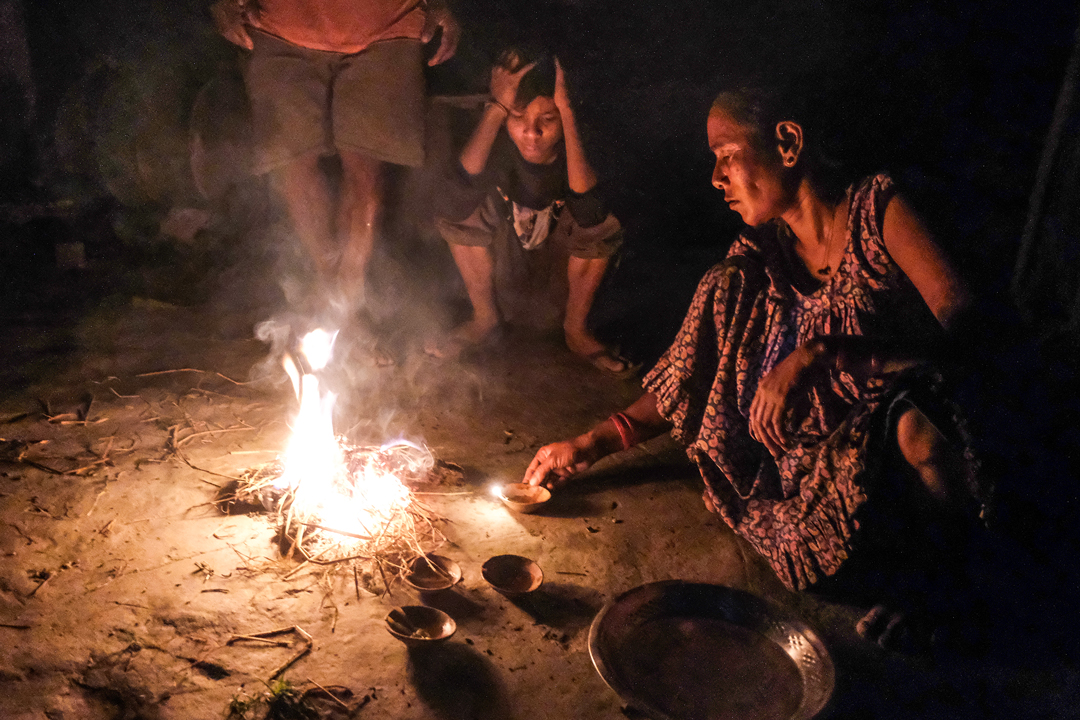
The Following Day – the Festival of Colors
The following morning, women of each house gather in the same field where Holika was set ablaze. They mark the beginning of the color festival by putting color powders on each other’s faces and hands. Each and every woman holds a Baharni (stick broom) and a water pot in their hand. They form a large circle around the burnt ashes of the hay pile and perform a traditional dance. The dance involves dipping Baharni in the pot and splashing water droplets on the ashes. It is performed to completely douse the fire by removing heat from the burnt ashes of Holika.
Following the extinguishing dance, the vast gathering of women then makes their way to the village temple. They then walk around the villages. The neighbors then gather for special feasts. The celebration with colors and feastings continues throughout the day.
All Photos: Simon Paudel/ DCNepal
Facebook Comment
latest Video
Trending News
- This Week
- This Month


